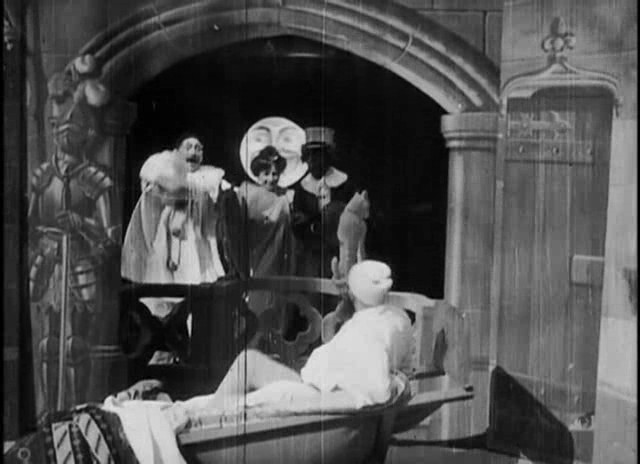It is precisely this disorientation that draws us to Cocteau’s aesthetic project, for it was Cocteau who, in the collaborative construction of Parade, insisted on these disorienting effects. They are crucial to his understanding of what art and composing do. Pitching himself somewhere between Dada and surrealism, Cocteau aims at nothing less than breaking down the barrier between reality and dream, in particular by reimagining objects as part of larger dreamscapes that allow us to reimagine and play with possibilities for living. Multimedia becomes central to Cocteau’s project as it mobilizes objects in the service of this vision—hence his lifelong preoccupation with ballet, visual and decorative arts, and perhaps most important, film:
A film is not the telling of a dream, but a dream in which we all participate together through a kind of hypnosis, and the slightest breakdown in the mechanics of the dream wakens the dreamer, who loses interest in a sleep that is no longer his own.
By dream, I mean a succession of real events that follow on from one another with the magnificent absurdity of dreams, since the spectators would not have linked them together in the same way or have imagined them for themselves, but experience them in their seats as they might experience, in their beds, strange adventures for which they are not responsible . . . (40).
For Cocteau, engaging multimedia is fundamentally pedagogical, and he sketches out a rough, democratizing pedagogy for working multimodally:
I am sorry that sound reproduction and cinematography
are not more widely used for educational purposes in schools.
Voices are obviously more striking than a text read out aloud, and it is more pleasant and more effective to learn from pictures, for example in a subject like history. Children should be shown slow-motion films of plants and flowers, and Painlevé's films on the birth of a butterfly and a sea horse. I cannot understand why all schools are not equipped with 16mm projectors, as well as long-playing records or tapes—and not for simple entertainment, outside the syllabus. (36)
"L'hippocampe" by Jean Painlevé (YouTube)

"Méliès, Le cauchemar (Star Film 82, 1896)" by Georges Méliès; screenshot made by divx. Licensed under Public Domain via Wikimedia Commons.